


 |
||||||||||||||||||||||||||||
 |
||||||||||
Eero Paloheimo |
||||||||||
生态城的主要指导原则 Key Guiding Principles of the Eco-City |
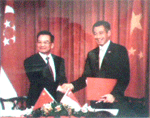 |
|||||||||
三和 人与环境和谐 人与经济和谐 人与人和谐 |
三能 能实施 |
|||||||||
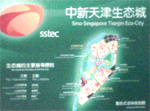 |
||||||||||
范:为什么我们需要生态城? 范:为什么想要在中国建造而不是在欧洲? 范:中国从生态城中能够得到什么? 范:什么是一个生态城? 或者说一个生态城是什么样子? For decades now, the structure of our towns and cities and the nature of city plans have been shaped by the passenger car. It is extremely difficult for urban planners to think without this condition. For this reason most new towns and cities are not as pleasant as older ones, nor as pleasant as they could be without the burdens typical for passenger cars. We also know that in any European metropolis, traffic is a complete disaster in many respects. The car is just one example. Such strong fortresses have been built around many other aspects of the industrialised society that tearing them down and replacing them with new ones seems an overwhelming effort. Nevertheless, those fortresses must be torn down, in order to save the earth from an environmental catastrophe. The underlying cause of this catastrophe is these incorrect structures. This issue has been discussed and written about so much that this audience is very likely to feel bored. The fact is, writing and talking is not enough. We need concrete actions. We need examples demonstrating that environmental problems can be solved with the help of modern technology. The eco-city is such an example. That is why it must be built. The first eco-city will not change the world. It will only provide a seed of change. A seed will grow into a tree; a forest will grow to surround that tree. But without that first seed, the forest will never grow. Without that first seed, the desert will remain a desert. This is why we need one eco-city that is radically different from existing ones. The Finnish scientists propose that the first ever radical eco-city in the world be constructed in China. You may ask why we want to build it in China and not in Europe. This question is justified, but there is an answer. Teresa: Why in China, not in Europe? The rigidity of technical structures runs parallel with administrative rigidity. This is the very issue my second argument concerns: administration and politics. Western politicians and civil servants have an unreasonable fear of the press. The media have a decisive influence on whether they may continue in their office. Thus their main goal is to avoid mistakes. This makes Western decision-makers timid. They are particularly careful not to make any radical decisions. Bold solutions must undergo review at several administrative levels, becoming more and more conservative during the process. This too is a confession rather than an accusation. I have been a member of the Finnish Parliament for eight years and an official, a professor at the Helsinki University of Technology, for five years. As far as I understand, Chinese decision-makes do not have the same constraints and are not as easily steered by the media. Major, radical decisions may be easier to take when you believe they are correct and need not suffer from irrelevant criticism. Making such a radical decision as to build an eco-city is possible in China. It would not be possible in Finland or other European countries. Teresa:what China will gain from the eco-city. Teresa: What is an eco-city? Or, what is an eco-city like? A third example is cities that do not seem ecological but may have some of the qualities of a genuine eco-city. In these cities more attention may have been paid to the energy consumption of buildings, or they may have a denser public transport network, than other cities in general. They are modest attempts in the right direction. They are not eco-cities, even though they have some elements of an eco-city. They are good attempts in the right direction. There are two aspects which may be considered as absolute indicators of ecological integrity. The first one has to do with the first steps of the production process and the other with its last steps. First, an eco-city is economical in all respects. Secondly, an eco-city does not pollute its surroundings. These two aspects can be considered the basic features of an eco-city and as indicators of ecological integrity. There are several other less absolute requirements. A city must also be attractive. That is why it must be pleasant. But we should remember that any city can be pleasant. That is not an indicator of ecological integrity. An attractive eco-city is a mixture of pleasant ambience and absolute ecological integrity. I will next attempt to provide a brief definition of issues related to the technical features of an eco-city and explain the reasoning behind these solutions. We will come back to these matters tomorrow and the day after tomorrow in detailed presentations. There may be different types of eco-cities. Let me present one example. In an eco-city, most of the food the residents consume will be produced in the city itself, since this minimises transport costs and traffic emissions. Thus it is much less densely built-up than an ordinary city. The eco-city includes built-up areas alternating with fields, commercial forests and park-like natural reserves. Organic waste is recycled by means of composting and in bioenergy production. A Chinese eco-city with 20,000 inhabitants would cover a land area of approximately 50 km2, which means a population density of 400 people per km2. Let us compare that with a few well-known cities. In Paris there are 25,000, in London 5,000 and in Tianjin 1,000 inhabitants per km2. These are all metropolises. In the Helsinki metropolitan area – which covers approximately 3,000 km2 - the population density is approximately 400 people per km2. This is less than the population density of a densely built-up city, but between that of an ordinary, densely built-up city and rural areas. The population density is nevertheless approximately three-fold compared with the average population density in China. An eco-city generates the energy it needs without polluting the air, water or soil. For this purpose, a large part of the city area will be reserved for solar panels, wind generators, geothermal heat pumps and bioenergy production. These areas are at some distance from the residential areas. Bioenergy production releases carbon dioxide into the atmosphere, but plants re-absorb the carbon from the air. Thus a balance is maintained and the carbon burden of the atmosphere does not increase. The next few decades will see that the production of solar panels and wind generators increase in leaps from current levels. An eco-city also includes artificial pools for fish farming and vegetables will be grown in greenhouses where ambient temperatures are too low for normal field cultivation. Artificial pools can be integrated with the biological water purification system and energy supplied to the greenhouses the same way as other parts of the city. In addition to food and energy, the third commodity needed daily is water. An eco-city will have a closed water circulation system. This means that water is not imported from outside the city, nor is wastewater transported outside the city. At this point it should be noted that naturally, the current water circulation system is also closed; however, water is circulated through untreated water. In an eco-city the water circulation system is controlled. It is partially based on biological and natural purification, but also utilises physical and chemical purification methods. Being self-sufficient in energy, food and water is not
necessarily a more nature-saving or non-polluting solution than being
dependent on outside production. However, an eco-city ensures these processes
are non-polluting and avoids using virgin natural resources. By being
self-sufficient, the eco-city ensures that it is genuinely non-polluting
and nature-conserving. An insincere ecological approach means that you
only address ecological concerns in your own area and pass all problems
on to your neighbours. However, there are two larger issues
that are fundamentally reflected in land use planning and zoning throughout
the entire city. These are transport and construction. There are no passenger
cars in an eco-city. They will have been replaced with vehicles resembling
the passenger car. These vehicles do not pollute the air since they are
electrically operated and controlled via a city-wide navigation system.
They work like lifts, but move horizontally. These vehicles will be discussed
in more detail in later presentations. This transport system makes urban
planning easier in many ways. Streets may be narrow, pleasant and winding.
Parking areas are not needed by the roadside or elsewhere. When the vehicles
are not in use, their power units will be charged at stations designed
for this purpose. There is no noise from traffic, which is safe and non-polluting.
Bicycles are also allowed, while passenger cars are not. Data communications
are of very high, state-of-the-art quality. There are rentable facilities
for information distribution here and there in the city, with large panels
covering the walls. The panels can be used for virtual meetings with experts
around the world, finding information on the Internet, contacting hospitals
or universities, trading and taking care of any number of daily matters.
The facilities will be available for all inhabitants. While they resemble
Internet cafés, they are technologically much more advanced. These opportunities
will also be discussed in detail later. As for the opportunities offered
by a new goods traffic system, I would not recommend these for the first
eco-city. In this respect, we can allow for some compromise over the requirements
concerning the radical nature of the eco-city. However, I mention the
system here as a future ecological transport system. In the future, goods
will be transported in vacuum tubes using magnetic levitation. This will
minimise the energy required for transporting goods. But for now, let
us only bear this in mind. This solution applies to goods traffic between
cities and other urban locations rather than the internal infrastructure
of an individual city. Construction and land use planning are seamlessly
linked with transport. Since the eco-city is car-free, construction can
be steered and planned without this burden. The eco-city will have a modern,
sophisticated data communications system, which enables efficient communications
between different sectors and allows for less compact development in land
use. The residents can easily exchange information without meeting each
other in person and live in single-family houses. Built-up areas can be
interspersed with commercial forests, energy plantations and uncultivated
parkland without causing logistical problems. Buildings are constructed
and maintained with an eye on various ecological principles. This means
that local materials are used wherever possible and energy is conserved
at the various stages of the process. Buildings are designed to be energy-saving
and long-lasting. These aspects are also taken into account in land use
planning. For example, buildings are positioned to catch maximum sunlight.
Finally, I should say a few words about the residents. This matter will
also be discussed in more detail in later presentations. It is surely
important that people move into the city voluntarily, since a city cannot
be functional unless its residents feel at home in their environment.
Resident satisfaction can be ensured by various ways, which are not in
conflict with the basic ecological requirements. These two approaches
are mutually supportive. It should be remembered that the first eco-city
will be a seed and pave the way for further development. For this reason
it is evident that the city will attract a large number of residents from
among those who will design the next eco-cities and later participate
in their construction. To support this development, the first eco-city
could even house an international research institute concerned with the
development of ecological housing and communities in cooperation with
various universities. Otherwise, the residents will represent a variety
of occupations like the residents of any other city: there would be doctors,
farmers, carpenters, teachers, etc. However, it is clear that designing
the first eco-city is much more than a purely technical task. Engineers
alone cannot design an eco-city. This requires co-operation involving
countless professions. When the first eco-city is being designed, the
priority is to define the goals and minimum requirements correctly. Next,
a team of designers representing sufficiently varied expertise must be
chosen. An eco-city is suited for various kinds of activities, not excluding
production with a special goal. Let me mention a few examples. An eco-city
could house a small factory for the assembly and maintenance of the special
vehicles used in the city. Production could later be expanded to supply
similar vehicles to other cities. An eco-city must also have a maintenance
centre for the energy production equipment. Thus the production sector
could support the basic idea of the eco-city and thus facilitate the design
and construction of the next generation of eco-cities.An eco-city could
house several small research institutes. For example, there could be a
research institute combining the basic philosophies of Chinese and Western
medicine. While this does not have much to do with ecological integrity,
it is not contradictory to the basic goals and would be consistent with
the spirit of the city.My purpose in describing these examples was to
provide a brief answer to a fundamental and justified question: the question
of what it would be like to live in an eco-city and what kind of people
would live there. |
||||||||||
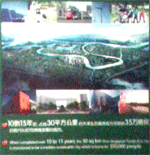 |
||||||||||
 |
||||||||||
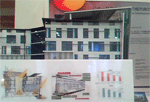 |
||||||||||
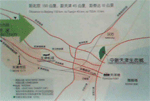 |
||||||||||
| 回到范思对谈录首页 | ||||||||||
| 范思设计公司 版权所有 北京邮政100101-200信箱 (100101) 客服中心:8610-64956392 电邮:13911624921@139.com |